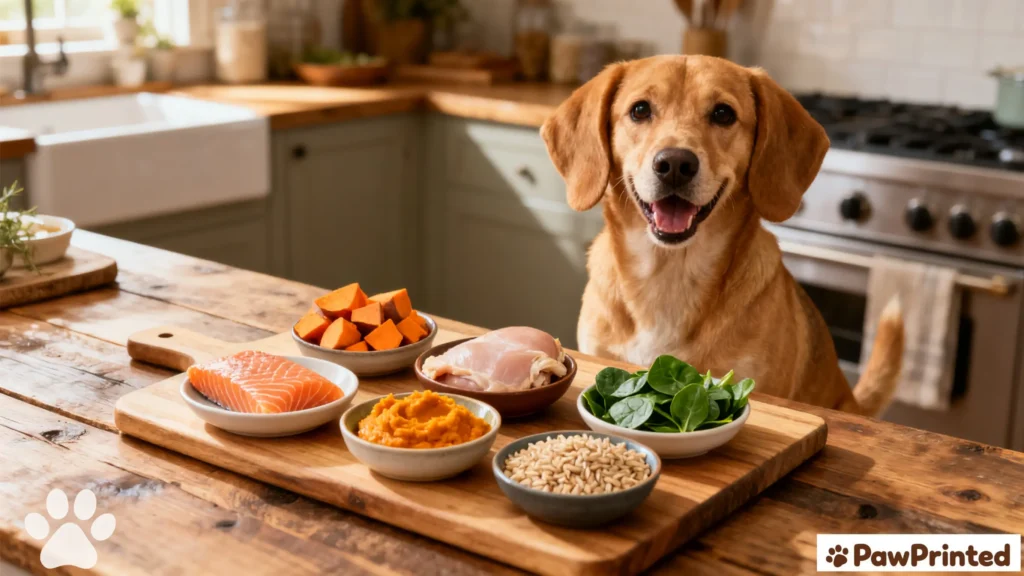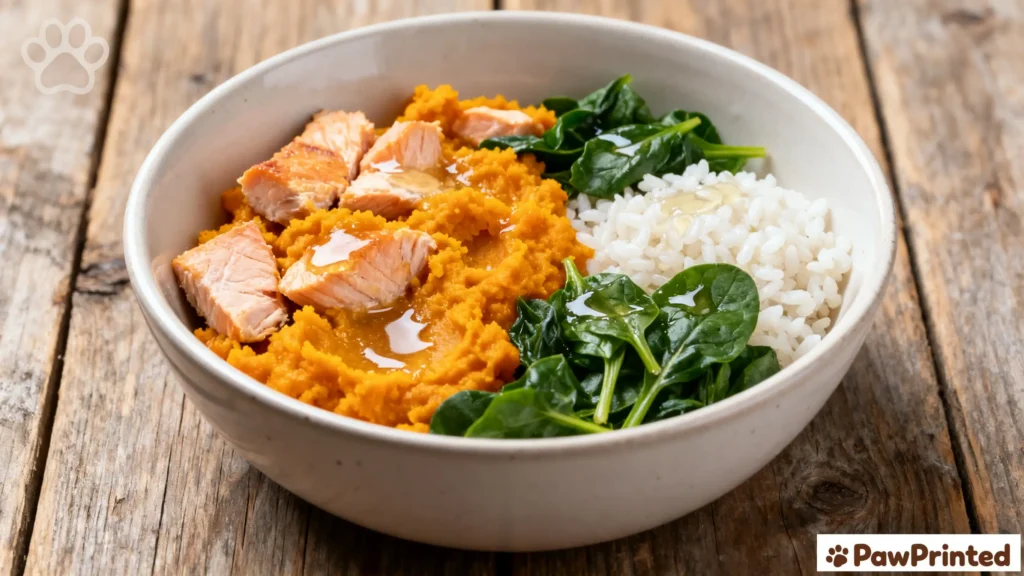Some dogs thrive when meals stay simple and predictable. Ingredient-based dog food organizes choices by the primary ingredient—like salmon, lamb, or turkey—so you can match nutrition to your pup’s skin, stomach, and energy needs. This hub links out to our in-depth guides and shows how to choose a starting point with your vet.

Why Ingredient-Based Food Matters
When I first started reading labels, I realized many commercial kibbles listed “meat meal” or vague “by-products” instead of clear proteins. That’s when I turned to ingredient-based feeding. Choosing a diet built around single, transparent proteins—like salmon, turkey, or lamb—makes it much easier to track what agrees with your pup’s system and what causes flare-ups.
For example, when Ethan had itchy patches, switching to a limited ingredient salmon recipe helped calm his skin within weeks. By focusing on clean proteins and simple carb sources like sweet potato or brown rice, I could rule out fillers and keep digestion smooth. Veggies such as spinach and green beans add fiber and natural vitamins, while small touches like blueberries or chia seeds boost antioxidants.
The beauty of ingredient-based food is control—you can rotate between proteins (chicken, duck, venison) while keeping carbs and veggies steady, or try hypoallergenic bases if your dog has sensitivities. If your pup struggles with stomach issues, check our Sensitive Stomach Dog Food guide for extra tips. For pups with allergy-driven scratching, our Dog Food for Allergies article explains how ingredient swaps can reduce triggers.
Ingredient-based doesn’t mean complicated—it means clarity, fewer surprises, and easier troubleshooting. It’s a vet-approved way to support long-term health, especially for dogs with skin sensitivities, digestion struggles, or food allergies.

Explore by Ingredient
Salmon Dog Food
Rich in omega-3s for skin/coat comfort; a steady pick when itching or flaky skin pops up.
Lamb Dog Food
Mild, highly palatable protein that often suits sensitive stomachs and selective eaters.
Turkey Dog Food
Lean protein profile that supports weight control while keeping muscle tone steady.
Grain-Free Options
Useful when grains appear to be triggers—understand benefits, caveats, and vet notes.
Raw & Novel Proteins
Duck, venison, rabbit, and raw styles for specific needs—start slow and track responses.

How to Choose for Your Dog
Start with the history: note past food wins and flares. Pick one variable: change the protein or carb—not both. Meet AAFCO needs: ensure “complete & balanced.” Match life stage: puppy, adult, senior each have targets. If sensitivities are part of the picture, see our hubs on allergies and sensitive stomach, then transition slowly with our 7–10 day plan.
Quick tip: track weekly notes (stool, itch, energy) and adjust with your vet. Consistency beats complexity.

FAQ
It can help you identify triggers by simplifying the recipe. Start with one primary protein and one carb, keep the rest of the routine steady, and monitor for 7–10 days. For broader context, see our allergy hub.
No. Ingredient-based groups foods by key ingredients (like salmon or lamb). Grain-free removes grains specifically. Some ingredient-based foods include healthy grains; learn more in our grain-free guide.
Yes—if the formula is complete & balanced for growth. Puppies need steady calcium, DHA, and digestible protein. Review our puppy feeding guide and transition gradually with the 7–10 day plan.
Go slow: 25% new for 2–3 days, 50% for 2–3 days, 75% for 2–3 days, then 100% if stools and energy look good. Full walkthrough in our transition guide.

